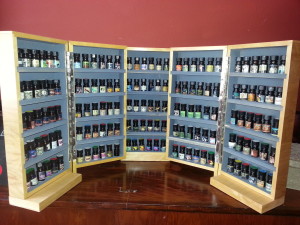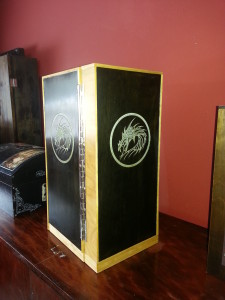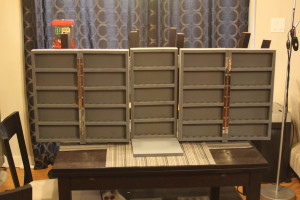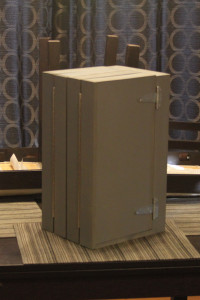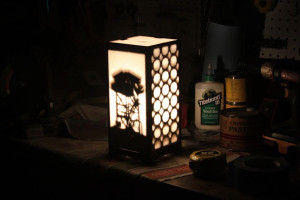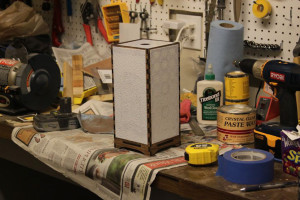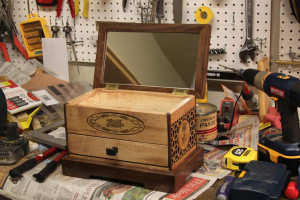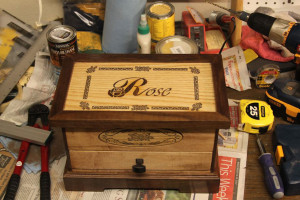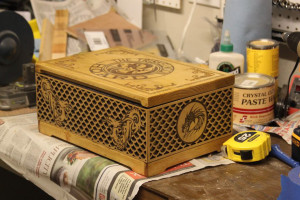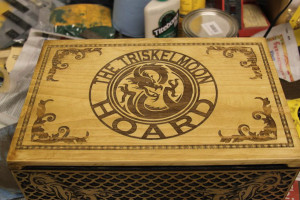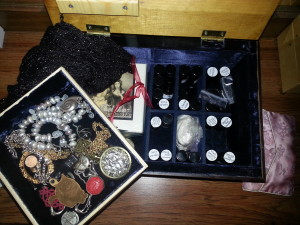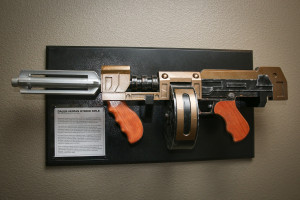 Once upon a time, my friend Pete said, “You know… I don’t really give a damn about props, but if I could have one prop, it would be that Dalek machine gun from that one episode of Dr. Who.” At least, I think that’s what he said.
Once upon a time, my friend Pete said, “You know… I don’t really give a damn about props, but if I could have one prop, it would be that Dalek machine gun from that one episode of Dr. Who.” At least, I think that’s what he said.
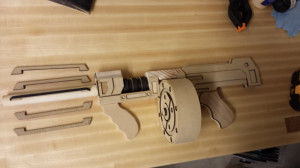 I managed to find plans online that a clever gentleman created so that he could machine the parts from layers of MDF on his CNC machine. I converted them into .dxf format so that I could lase them out of thinner layers of MDF and accomplish the same end. Got them cut out on the laser, except for the pieces that were 1/2″ thick (too thick for speedy cutting on the laser). I used the laser to quickly draw the pattern on the surface of the wood, then cut it out on the bandsaw.
I managed to find plans online that a clever gentleman created so that he could machine the parts from layers of MDF on his CNC machine. I converted them into .dxf format so that I could lase them out of thinner layers of MDF and accomplish the same end. Got them cut out on the laser, except for the pieces that were 1/2″ thick (too thick for speedy cutting on the laser). I used the laser to quickly draw the pattern on the surface of the wood, then cut it out on the bandsaw.
Bending the MDF around the drum magazine was pretty hair-raising. I’m just going to throw that out there.
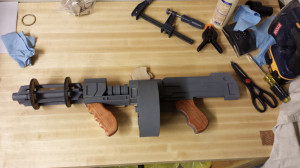 Applied a trusty coat of battleship-gray to the whole thing, except for the grips. The rear grip turned out really, really well. It was laser-cut birch ply which stained well and looked like actual grips. The front grip, however, was made from cheap pine, had a poor grain pattern, and didn’t take stain well at all.
Applied a trusty coat of battleship-gray to the whole thing, except for the grips. The rear grip turned out really, really well. It was laser-cut birch ply which stained well and looked like actual grips. The front grip, however, was made from cheap pine, had a poor grain pattern, and didn’t take stain well at all.
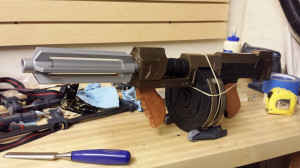 Applied some metallic rattlecan silver and gold for accents over the top of semi-gloss black. Covered the whole thing with a coat of matte sealer (which would start to flake off weeks later).
Applied some metallic rattlecan silver and gold for accents over the top of semi-gloss black. Covered the whole thing with a coat of matte sealer (which would start to flake off weeks later).

